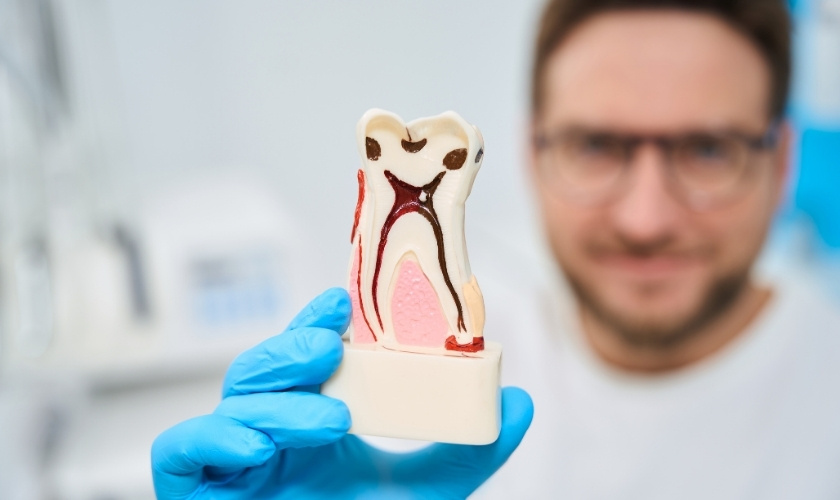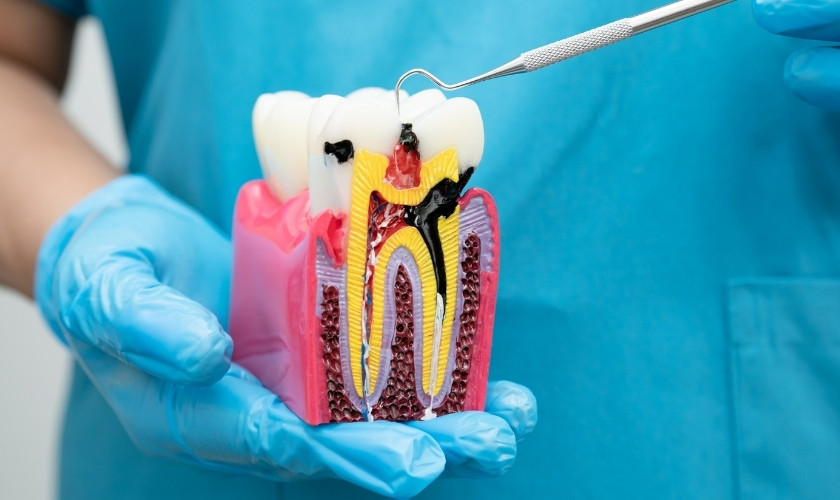
A root canal is a common dental procedure designed to save a damaged or infected tooth. While it offers long-term relief and prevents further oral health complications, some patients experience discomfort or mild pain after the treatment. Fortunately, this post-procedure discomfort is usually temporary and manageable. Let’s explore how to relieve pain after a root canal and what you can do to support a smooth recovery.
Understanding Post-Root Canal Pain
It’s important to understand that a certain level of soreness or tenderness is expected after a root canal. This discomfort typically peaks within the first 24 to 48 hours and gradually subsides over the next few days. You may feel pain due to:
- Inflammation of the surrounding tissues
- Pressure from the dental instruments used during the procedure
- Temporary filling or crown adjustments
- Sensitivity around the treated tooth
Pain that persists for more than a week or becomes severe may require a follow-up visit with your dentist.
Why Pain Occurs After a Root Canal
It’s natural to experience some level of soreness after a root canal. During the procedure, your dentist removes the infected pulp from inside the tooth, cleans and shapes the root canals, and then seals the space. This process can sometimes irritate the surrounding tissues, leading to mild inflammation and discomfort.
The pain is often described as dull, throbbing, or tender, especially when biting down. However, it typically fades within a few days. Severe or prolonged pain, however, could signal an issue that requires attention from your dentist.
Top Ways to Relieve Pain After a Root Canal
1. Take Prescribed or Over-the-Counter Pain Medication
Your dentist will likely recommend or prescribe pain relievers such as ibuprofen (Advil) or acetaminophen (Tylenol) to ease inflammation and discomfort. These medications are effective in managing mild to moderate pain.
- Tip: Always follow the dosage instructions provided by your dentist or the medication packaging.
2. Use a Cold Compress
Applying a cold compress to the cheek near the treated area helps reduce swelling and numbness. Wrap a few ice cubes in a cloth or use a gel ice pack and apply it to the outside of your jaw for 15–20 minutes at a time.
- Tip: Do not apply ice directly to the skin, and avoid using a compress continuously to prevent skin irritation.
3. Avoid Hard or Chewy Foods
After a root canal, the treated tooth may be temporarily fragile until a permanent crown or filling is placed. Eating hard, crunchy, or sticky foods can increase pressure on the tooth and cause pain.
- Tip: Stick to soft foods such as yogurt, soup, mashed potatoes, and smoothies for a few days after the procedure.
4. Maintain Good Oral Hygiene
Keeping your mouth clean prevents bacteria from infecting the treated tooth. Brush and floss gently around the affected area and rinse your mouth with a mild, non-alcoholic mouthwash or warm saltwater solution to keep the area clean.
- Tip: Mix one teaspoon of salt in a cup of warm water and gently rinse your mouth two to three times a day to reduce inflammation and promote healing.
5. Avoid Smoking and Alcohol
Both smoking and alcohol can delay healing and increase the risk of complications after dental procedures. They may also intensify pain or interfere with medications.
- Tip: Take this opportunity to reduce or eliminate tobacco and alcohol use, not just for dental recovery, but for overall health benefits.
6. Get Plenty of Rest
Rest is essential for recovery. Avoid strenuous activities for at least 24 hours after your procedure, and try to get a good night’s sleep. Giving your body time to heal can significantly ease post-root canal discomfort.
When to Call Your Dentist
While some discomfort is expected after a root canal, you should contact your dentist if you experience any of the following:
- Severe pain that worsens after 2-3 days
- Swelling that does not reduce or worsen
- Fever or chills
- An allergic reaction to medication (rash, itching, difficulty breathing)
- Persistent bad taste or discharge near the treated tooth
These could be signs of complications such as infection, a missed canal, or an issue with the temporary filling.
Pain after a root canal is usually minimal and short-lived, especially when you follow your dentist’s aftercare instructions. With over-the-counter medication, cold compresses, dietary adjustments, and proper oral hygiene, you can manage discomfort and ensure a smooth recovery.
If you’re unsure about your symptoms or need more personalized advice, don’t hesitate to contact your dental provider. Remember, your comfort and oral health are a priority, and timely care leads to better outcomes.




